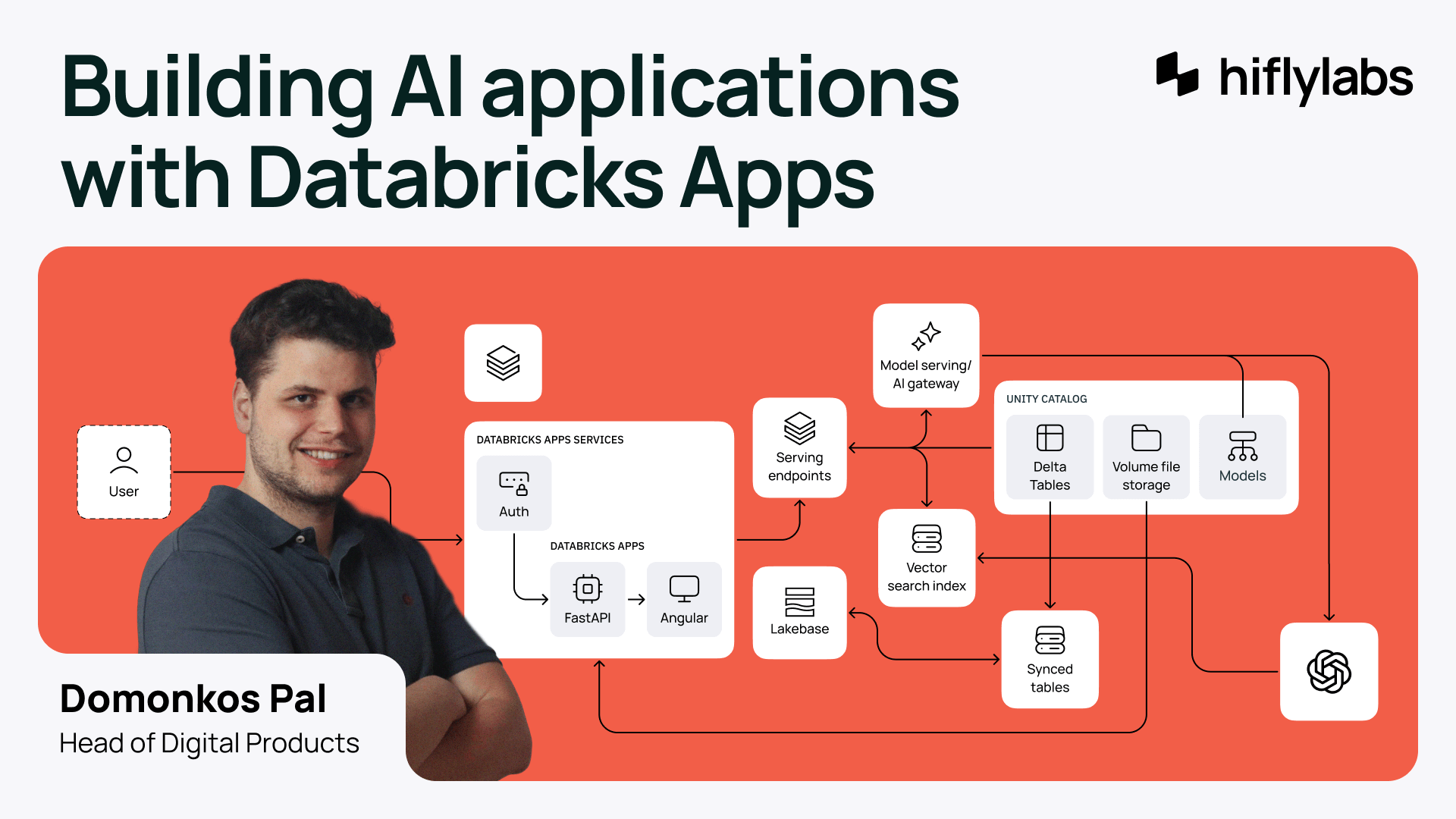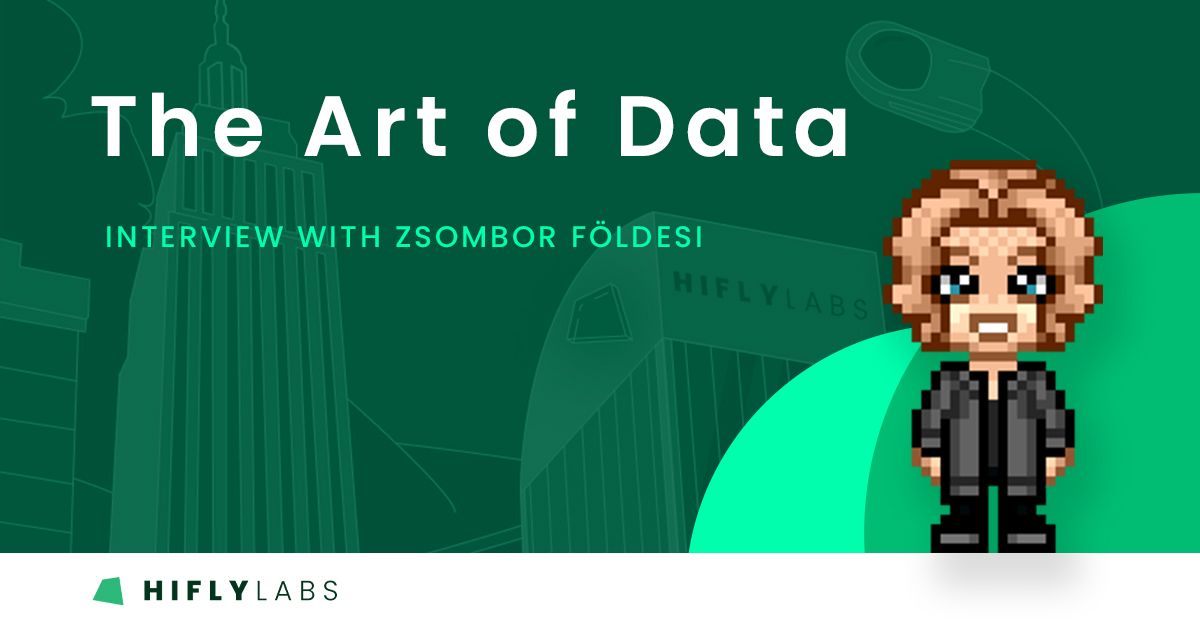
Building an AI Application with Databricks Apps in 30 Days
Discover how to build a production-ready AI application on Databricks Apps in just under a month. Learn from our journey, challenges, and architectural choices.

How does someone with an artistic interest get into the world of data?

Zsombor Földesi has grown from a junior engineer to a key member of the Analytics Engineering team over the past years. He started programming as a hobby during his high school years, and since then he has been constantly learning, mentoring, developing, and always working on something new.
Find out how one turns from music to data, and from junior developer to lead engineer, by reading our 3-minute-long interview with Zsombor.
Initially, I was interested in the philosophy of art, and I was also active in music. I got into coding when I started making noise generators, step sequencers, and MIDI controllers with my friends.
At the beginning I played with microcontrollers just for my own amusement. For example, creating a digital interface to an acoustic instrument like a drum, or hacking an old children's synthesizer to generate more interesting sounds.
It all started with building strange devices, but we never finished anything.
It wasn't about that… It was about the process itself and finding out how it is possible to create what we have imagined.
The whole process starts with data. Getting data from somewhere, wrangling it, then triggering some action - that's what I've always been interested in.
When I started learning Python 7 years ago, the world opened up. I coded things like web scrapers to fetch articles from every Hungarian news portal, looking for answers to social questions by setting different rules and looking for patterns.
But I have done many other projects, from Facebook Messenger-controlled air freshener, to a web based VR museum, but for me, the final product was never the goal, but rather to learn how something could be implemented. I think these projects taught me a lot about system architectures, even though at the time I didn’t know this was called a “proof of concept” then.
In 2017, I joined a game developer group to work on a multiplayer gesture-controlled VR game, named Orion City. The project was developed in a startup incubator called Kitchen Budapest, where I was able to meet a lot of inspiring and talented people, with whom I could learn a lot.
In 2018, I started looking for my first “real adult” job.
I wrote the first CV of my life, which was not perfect, to say the least. Besides my bedroom projects, it also contained a few spelling mistakes. The first place I sent my CV was Hiflylabs.
I was interested in buzzwords like “Big Data” and “Neural networks”, but all I knew was that I wanted to do software development with a focus on data. The expectation for the job was to know SQL and Python and fortunately, I had that knowledge.
Things soon picked up, and I started working on projects with my current mentor and Hiflylabs’ CTO András Zimmer.
At that time, the Analytics Engineering team did not exist. András and I worked on technically complex projects that did not fit into the competencies of other teams, like productionising ML projects on Kubernetes or doing Hiflylabs’ first cloud-native DWH project, but these were all joint works with colleagues from other teams.
It was already clear in 2020 that dbt has the potential to be a perfect match for our use cases, and we would need more engineers on board to fulfill our client's needs. The team started to expand and since 2021 it has been known as the AXE (short for AnalytiX Engineering) team at Hiflylabs.
AXE is a well-knit team, made up of people I can relate to, and enjoy working with.
We are a technology-focused team with business acumen, a tech squad that is deployed when a client requires a rapid solution, quick understanding, and projects where we can act on our technological desires.
There are always exciting and challenging tasks, and I'm lucky because I can do what I love.
For motivation, I only need a list full of tasks. I'm quite greedy, but they won't hold me back at Hiflylabs.
During my 5 years here, I contributed to over 20+ projects with 15 clients.
There is always room for improvement, and András has always supported me in that.
The professional network is very strong, there are diverse projects, and you can always solve exciting problems in different environments with leading-edge data technologies.
If you want to improve, then no one is going to stop you from doing things that you like, things you’re interested in.
At Hiflylabs it’s fine if you are a fresh university graduate without any experience, just be open-minded, and determined and we will teach you the rest.
BI has been around for quite some time. The foundations of the industry were laid down more than 25 years ago, today’s question is no longer whether you should deal with BI, but how efficiently you can do it compared to your competitors. What changed is how quickly and from what source the clients need data. The palette of different data tools has become more colorful.
Now dbt is the heart of a bubbling ecosystem. I am sure it will be around for a long time.
Now, the question for me is how the new tools in the modern data stack will integrate with each other.
Currently, dbt is mostly used by startups and SMBs. It is exciting to see how enterprises will adopt it, and where they will take this technology.
There's a lot of knowledge and expertise mixed in what we do, but it's not rocket science.
A good analytics engineer understands the language of business, is open to understanding different business needs, and can translate them into code. SQL was designed for this, but it gives you the edge if you have the software engineering chops and if you can think in architecture.
If you are interested in the world of data and have some questions or would like to hear more about the team's best practices, catch up with Zsombor at the next Budapest dbt Meetup for a chat!